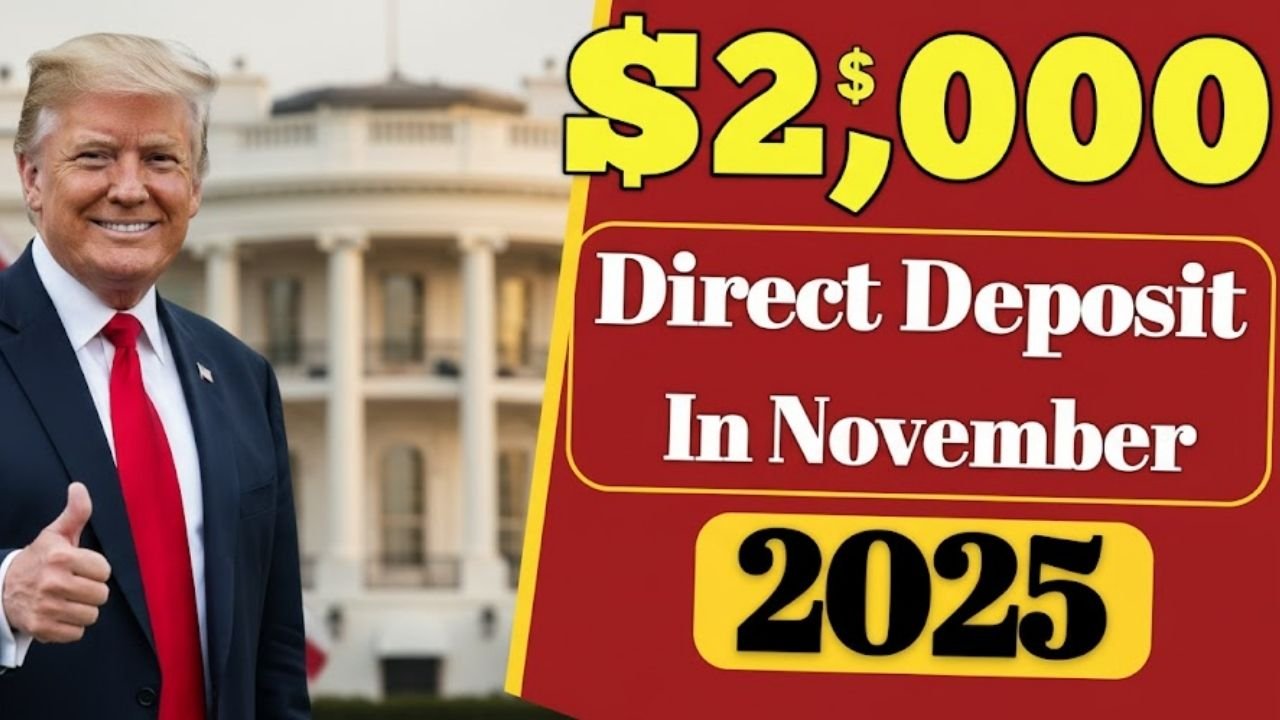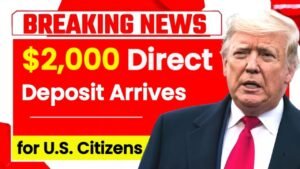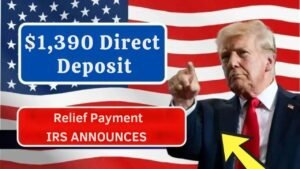Rumors about a $2,000 direct deposit for U.S. citizens in November 2025 have sparked widespread discussion online. With rising living costs, inflation, and financial pressures affecting millions, it’s natural that Americans want clarity. But what is confirmed, and what remains speculation? This article provides a clear fact-check, potential eligibility insights, and guidance on how to stay safe and informed.
Is the $2,000 Payment Real?
As of now, there is no official confirmation from the federal government regarding a $2,000 payment in November 2025.
- No law, bill, or IRS announcement guarantees the payment.
- Discussions about the $2,000 amount are based on economic proposals and policy suggestions, not formal approval.
- Any federal relief program must undergo Congressional approval, funding allocation, and a public announcement before distribution.
Key takeaway: Viral posts and social media chatter do not equal official authorization.
Why the $2,000 Payment Is Being Talked About
The idea of a $2,000 relief payment is circulating due to ongoing economic challenges faced by many Americans:
- Rising grocery, fuel, and utility costs
- Higher rent and mortgage payments
- Interest rate increases
- Wage growth lagging behind inflation
- Financial strain on seniors, veterans, and low-income households
These factors have prompted policymakers, advocacy groups, and online discussions suggesting additional federal support. However, discussion does not mean approval.
Potential Eligibility (If Approved)
While no official program exists yet, past federal relief efforts suggest potential eligibility may consider:
- U.S. citizenship or lawful permanent residency
- Income limits based on recent tax returns
- Recipients of federal benefits (Social Security, SSI, SSDI, VA)
- Updated tax and banking information
- Household size or dependent status
- Age group, such as working adults or seniors
Eligibility would likely be determined by IRS records or federal databases if a program is introduced.
Possible Payment Methods
If a $2,000 direct deposit program were officially implemented, distribution would likely follow methods used in prior federal programs:
- Direct Deposit: Fastest and most secure
- Paper Checks: Mailed to the address on IRS or SSA records
- Prepaid Debit Cards: Used previously for recipients without bank accounts
Tip: Ensure your IRS and SSA information is up-to-date to avoid delays.
Expected Payment Timeline
Currently, no official timeline exists. Any future distribution would require:
- Congressional approval or legislation
- Funding allocation
- Public announcement with instructions
- A confirmed payment schedule
Until these steps are complete, no exact payment dates can be confirmed.
How to Stay Safe from Scams
Financial rumors often attract fraud. Protect yourself by avoiding:
- Fake registration websites
- Apps claiming “early access”
- Requests for fees or personal banking information
- Social media posts promising guaranteed payments
Remember: The government never charges a fee to release relief payments.
FAQs – $2,000 Direct Deposit November 2025
1. Is the $2,000 payment officially confirmed?
No. No federal program guaranteeing this payment exists yet.
2. Will all U.S. citizens receive it automatically?
No. Any future program would define eligibility, not universal distribution.
3. Do I need to apply online?
No. Avoid third-party sites claiming early registration. Official instructions come from government agencies.
4. Will Social Security, SSI, SSDI, or VA recipients qualify?
These groups were included in past programs, but future eligibility has not been defined.
5. Should I update my records now?
Yes. Keep your IRS and SSA address, tax, and banking information current.
6. Where can I check for updates?
Only official sources such as IRS.gov, SSA.gov, VA.gov, and USA.gov.
Conclusion
The $2,000 direct deposit for November 2025 has generated widespread attention, but no official program exists yet. Until federal authorities confirm details, Americans should treat social media claims and viral posts with caution. Staying informed through official government channels and keeping personal tax and banking records updated are the best steps to prepare for any future relief programs.





